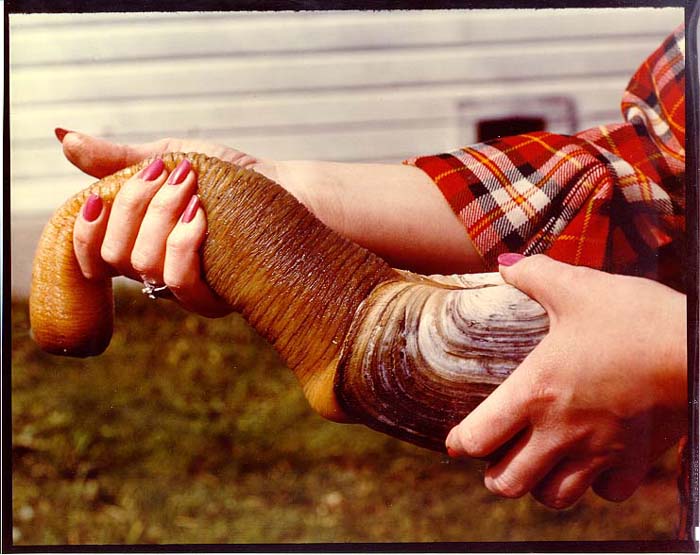We here at WTFNature are dedicated to sharing informative articles on the wonders of the natural world. Today's feature is a hardy little bivalve known as the geoduck (that's pronounced "gooey duck.") These animals can live over 100 years--
--in fertile saltwater all around the world. Their long siphons are used to peacefully filter debris particles for food and they, unlike most mollusks, are not--
--hermaphroditic but gendered. Breeding for geoducks is very slow and unreliable, as only a small fraction of their eggs are fertilized and an even smaller portion of these live to maturity. Also known as mirugai or long-necked clams, geoduck are used--
--all around the world in a multitude of dishes. They're an obscure but valued ingredient in some French sweetbreads, sliced thin in Japanese sashimi and served many ways in Chinese cuisine, usually as--
--a lovely fondue-style hotpot. Farming and selling geoducks is a major business in the Northern US and Canadian seaboard, mostly in Washington and British Columbia. It takes many years for the animals to mature from tiny bud-like nymphs into edible adults, and they sell for--
--up to $3 US per lb. Evergreen State College of Olympia honors the geoduck as their official school mascot. They earned the position because of the school 's motto, Omnia Extares (or, "let it all hang out,") as a--
--reference to their carefree, sedentary lifestyle. In short, the geoduck is a humble but sadly unappreciated creature that plays an important role in our economy, environment and academic scene. The unofficial motto of our site is 'give credit where it's due,' and today we honor the noble geoduck for its subtle contributions to the world.






No comments:
Post a Comment